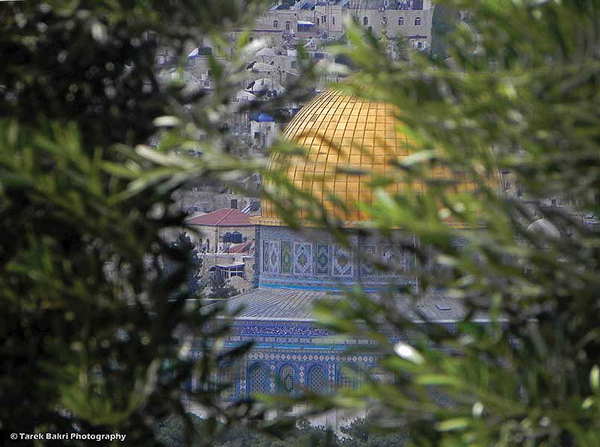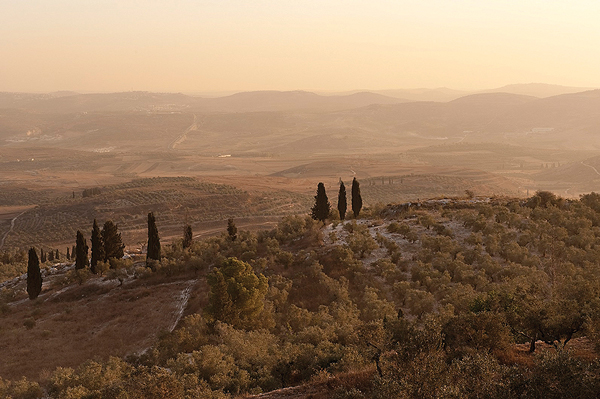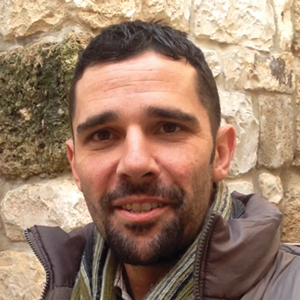
I have been working in the tourism field in Palestine for nearly 20 years and have seen firsthand the ups and downs of the industry. Tourism to the Holy Land has always been a barometer of the Palestinian-Israeli conflict, punctuated by both short-term and long-term periods of political unrest. This climate poses a threat to both Israel and Palestine since safety and security are the main factors that influence traveler decision making. Despite this unpredictable political environment, the resilience of the Palestinian tourism industry has proven itself time and time again. During periods of relative calm, both the private and public sectors (within their respective roles) invest in tourism development.
Coming together
Despite the fact that there is no end in sight, I am still cautiously optimistic that as a tourism destination, Palestine is on the right track, and we are gradually increasing our piece of the regional tourism pie. However, until the conflict comes to an end and Palestine becomes a viable and independent nation, tourism will never see its full potential. Our industry is gradually diversifying its offer and adding a wide range of new experiences for visitors – from the many community-based and outdoor experiences to the renovation of archeological and historical sites to a growing and geographically spread tourism infrastructure throughout the West Bank. The sector stakeholders across the board (public, private, and civil) are working in unison and cooperating on multiple fronts. During the last decade, the tourism sector was much more fragmented and there was little consensus between the public and private sectors as to how to position, promote, and sell Palestine. Today, the tourism sector is consolidating its efforts, the various stakeholders are defining their respective roles, and consequently, the tourism industry is starting to take shape and become a competitive regional player. Taking Bethlehem as an example, the governorate continues to receive a growing number of visitors from around the world. The accommodation sector has more than doubled over the last ten years, and today our hospitality industry is competing head to head with its Israeli counterparts.
Another exciting phenomenon is the growth in authentic tourism experiences such as the many community-based outdoor experiences that are offered throughout the West Bank. Take the Massar Ibrahim al-Khalil project, which consists of trails that stretch over 300 kilometers from the north to the south of the West Bank, offering visitors (foreigners and locals) the opportunity to explore Palestine’s amazing and diverse natural landscape, meet local communities, and experience the essence of Palestinian hospitality.
Despite this optimistic outlook, our vulnerability to the political situation, coupled with the many restrictions and hindrances imposed by Israel, will remain a key factor in any efforts or initiatives that we try to undertake. For example, it is extremely challenging for Palestinians to do any long-term tourism. There are too many uncertainties to take into consideration. When will the conflict end? What shape will any final-status agreement look like? What borders and hence attractions will be available as part of our offer? Will we have full control over our borders and consequently over the tourist flow? Will the 45-kilometer stretch along the Dead Sea be part of our offer? These questions reveal too many unknowns, and as a result the vast majority of our planning and efforts have been reactive and short term. Ultimately, our aim is to develop a sustainable tourism industry through increasing and diversifying the number and types of visitors, increasing their geographical spread across Palestine, and increasing the time and money spent among host communities.
The Jerusalem dilemma
When it comes to tourism development and getting a fair share of regional arrivals, each city or governorate in Palestine is faced with different challenges. Jerusalem’s challenges are unique. East Jerusalem remains under full Israeli control, and when it comes to tourism and visitor experiences, the Palestinian identity of the city is quickly diminishing and Palestinian heritage is being physically eroded by the Israeli authorities. To counter this phenomenon, Palestinian tourism planners (private and civil) have introduced several initiatives that aim to consolidate efforts when it comes to tourism planning and development in light of the vacuum left due to the Palestinian Authority’s inability to directly support this vital sector (or any other sector for that matter). For example, several key tourism organizations, namely, the Holy Land Incoming Tour Operators Association (HLITOA), the Arab Hotel Association (AHA), the Arab Tour Guides Union (ATGU), the Jerusalem Tourism Cluster (JTC), and Tourism and Art Jerusalem (TAJ) have recently signed a Memorandum of Understanding that aims to consolidate efforts to develop a sustainable tourism industry in Jerusalem. For the first time, these key institutions are working in unison through joint projects, joint lobbying, and joint planning efforts that aim to develop a sustainable tourism industry in Jerusalem that is built on promoting East Jerusalem and the Palestinian identity of the city. From joint marketing and promotional activities to more policy and organization development, East Jerusalemites from across the tourism value chain are coming together to revive the tourism industry in Jerusalem and bring it back to its rightful place in both the Holy Land and the Palestine tourism experience.

Palestine’s competitive advantage
Palestine is faced with an uphill battle. We do not have the resources (financial or other) to counter Israel’s aggressive and proactive initiatives when it comes to tourism planning, development, and promotion. Israel has been very successful at marginalizing the Palestinian tourism offer through its promotional efforts, its physical restrictions, its public relations arm, and most importantly, through positioning Palestine as an unsafe destination that is high risk. Given this reality, we are witnessing increased demand by foreign inbound visitors to include more sites and attractions in Palestine, and this provides for an opportunity. The vast majority of the West Bank remains undiscovered and off the beaten track of most visitors; and while the area has many new experiences and sites to offer, demand remains relatively low (especially among the mass-tourism faith-based markets). As Palestinian inbound tour operators, we have a competitive advantage that, if culminated properly, is an opportunity worth capitalizing on. With faith-based religious tourism being the backbone of our industry, Palestinian tour operators are able to sell and provide logistical arrangements across the Holy Land, which encompasses Israel, Palestine, and Jordan. Israeli operators, on the other hand, cannot directly sell the heart of the West Bank. For one thing, due to Israeli restrictions, Israeli tour guides, Israeli buses, and other service providers are not permitted to enter Area A of the West Bank. This means that destinations such as Jenin (Burqin Church), or Nablus (Jacob’s Well), and other key pilgrimage or tourism attractions cannot be sold directly through Israeli operators. The challenge for Palestine is how to increase visitor demand to these areas. This will require aggressive and strategic marketing efforts on both the macro and the micro levels; it will require raising the awareness of the unique, authentic experiences that these destinations have to offer visitors.

In conclusion, I sincerely believe that in spite of the many challenges and obstacles we face, the Palestinian tourism industry is heading in the right direction. We need to maintain our course and ensure that Palestine gets its fair share of regional arrivals. Our political landscape is not going to change any time soon, but we must persevere and stay focused. We need to continue consolidating an already fragmented sector in order to ensure that our resources and efforts work together in unison.
» Sami Khoury has been working in tourism development in Palestine since 1998. He is the founder and general manager of VisitPalestine.ps and is currently serving as president of the Holy Land Incoming Tour Operators Association (HLITAO).


